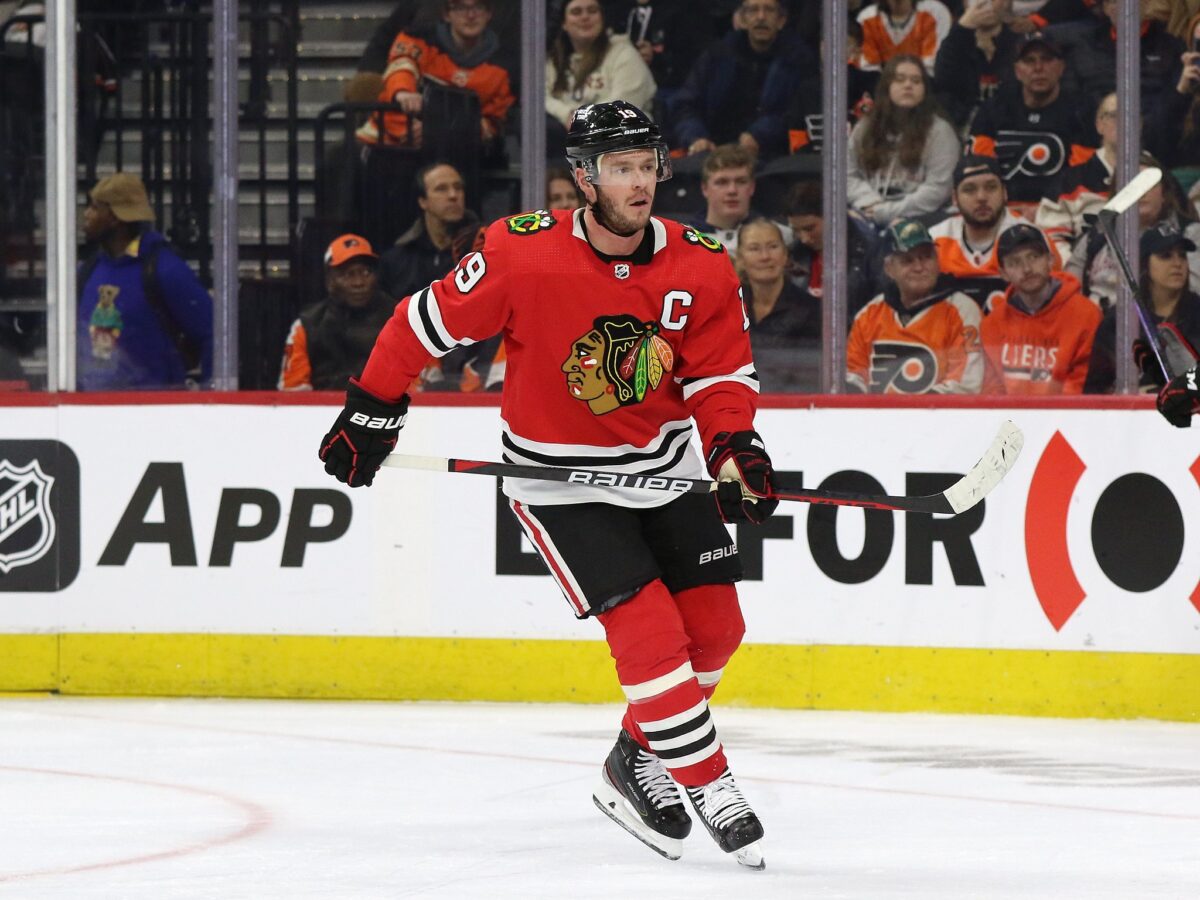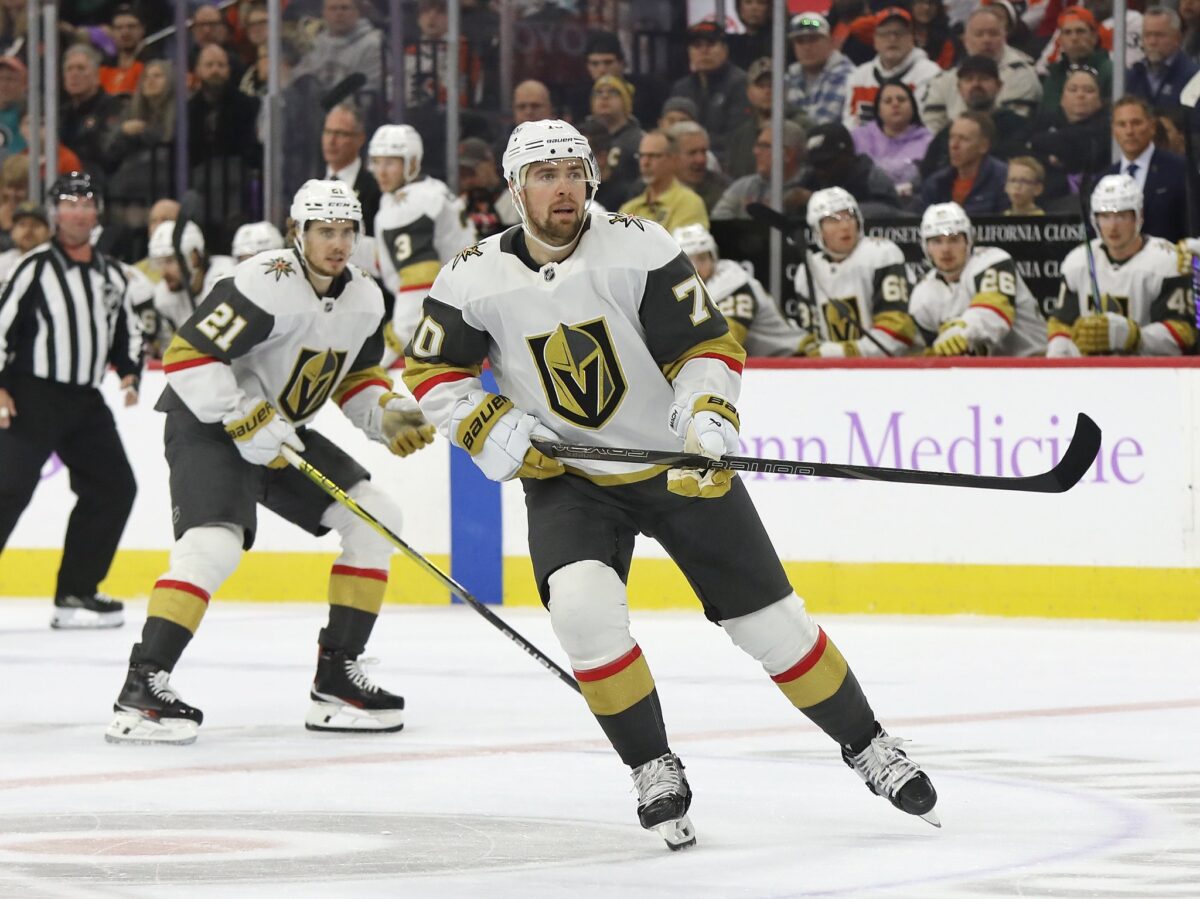After a franchise-best 56–22–4 regular season and their first-ever Presidents’ Trophy, the Winnipeg Jets could have tried to blow the doors off free agency or shuffle the deck with major trades. Instead, they’ve taken a quieter path—one that leans on leadership, structure, and trust in their identity.
Related: 3 Questions Facing the Winnipeg Jets in 2025-26
The Jets aren’t rebuilding. They aren’t overreacting. They’re refining. With Jonathan Toews returning home, head coach Scott Arniel continuing to shape the culture, and a set of smart depth additions, this version of the Jets appears to be a team that believes it’s not done yet. Here’s a look at the three key pillars shaping the Jets’ offseason and what they tell us about where the franchise is headed.
Pillar One: Toews Comes Home—What the Signing Means
It’s official—and for many Jets fans, it feels like a dream come true. Jonathan Toews, born and raised in Winnipeg, signed a one-year, incentive-heavy deal with the team, with a base salary of $2 million and another $5 million in bonuses. It’s a contract that ties his success directly to the team’s. After two full seasons away from the NHL due to lingering health issues, Toews—otherwise known as “Captain Serious”—is ready for one more shot at a championship, and what better place to do it than home?

At 37, Toews isn’t the same player who captained the Chicago Blackhawks to three Stanley Cups, but he still brings immense value. His leadership, faceoff prowess, and presence in the locker room make him a potentially game-changing addition, especially with Adam Lowry sidelined to start the year. Whether he plays second-line minutes or anchors the penalty kill from the third line, his return has already changed the mood around the team. Winnipeg feels different with Toews in the mix—and that matters.
Pillar Two: Arniel’s Blueprint—Less Flash, More Finish
Scott Arniel didn’t just take over as head coach—he quietly transformed the Jets into one of the league’s most disciplined teams. No flash, no gimmicks—just tight, structured hockey with an emphasis on responsibility, special teams, and puck support. The result? One of the league’s top penalty kills, balanced scoring, and a blue line that played with calm confidence.
Related: Jonathan Toews in Winnipeg Is More Than Just a Hockey Story
Arniel’s system gave room for players like Dylan Samberg and Neal Pionk to thrive, and it asked everyone—star or depth piece—to play with purpose. It’s not the kind of approach that dominates highlight reels, but it wins games. Now, the challenge for Arniel is to tweak that formula just enough to propel the Jets beyond their regular-season success and into a deeper playoff run. The foundation is there. The question is: can they build on it?
Pillar Three: Shifting Gears—Roster Changes Rolling In
Of course, no offseason comes without a few tough decisions. The most significant departure was Nikolaj Ehlers, who signed a six-year, $51 million deal with the Carolina Hurricanes. After ten seasons and 520 points in Winnipeg, losing Ehlers was a blow, but also a financial reality in a cap-tight league. Mason Appleton also moved on, signing with the Detroit Red Wings.

(Amy Irvin / The Hockey Writers)
In response, GM Kevin Cheveldayoff opted for veteran experience over star power. Gustav Nyquist, Tanner Pearson, and Phillip Di Giuseppe were brought in to stabilize the forward group and provide dependable depth. These aren’t headline-grabbing moves, but they fit the Jets’ identity: smart, durable players who can handle the grind of a long season. With the current mix of veterans and prospects vying for jobs, the forward group has quietly—and purposefully —been reshaped.
Looking Ahead for the Jets: Opportunity and Expectation Collide
As training camp approaches, the real competition begins. Toews will be watched closely to see if he can handle second-line duties early in the season. Cole Perfetti has a golden chance to grab a top-six role permanently, and don’t count out younger names like Nikita Chibrikov or Brad Lambert—they’ll be looking to force management’s hand with strong camps.
Related: Winnipeg Jets 2025-26 Roster Projection 2.0: Post Free-Agency Update
This isn’t a team taking a wild swing at contention. It’s a team that already knows what it is and believes it can be more. The additions, the coaching direction, and the depth chart all point toward a franchise that’s no longer trying to prove itself—it’s trying to finish the job. And with the Central Division in flux and belief running high in Winnipeg, the 2025–26 season could be the Jets’ most compelling chapter yet.
[Note: I’d like to thank Brent Bradford (PhD) for his help co-authoring this post. His profile can be found at www.linkedin.com/in/brent-bradford-phd-3a10022a9]
